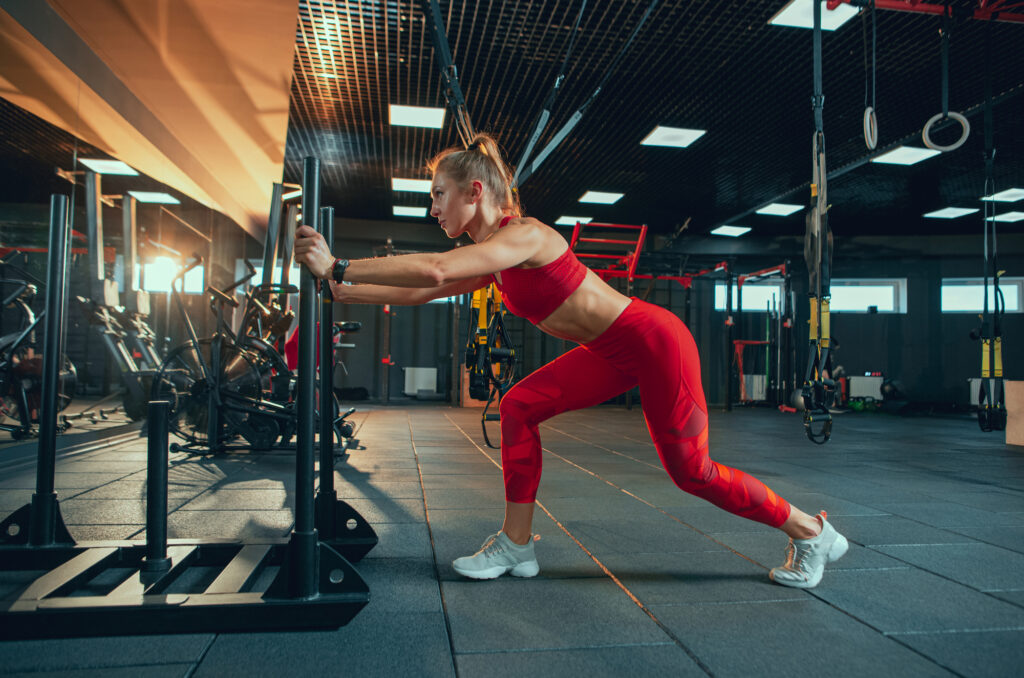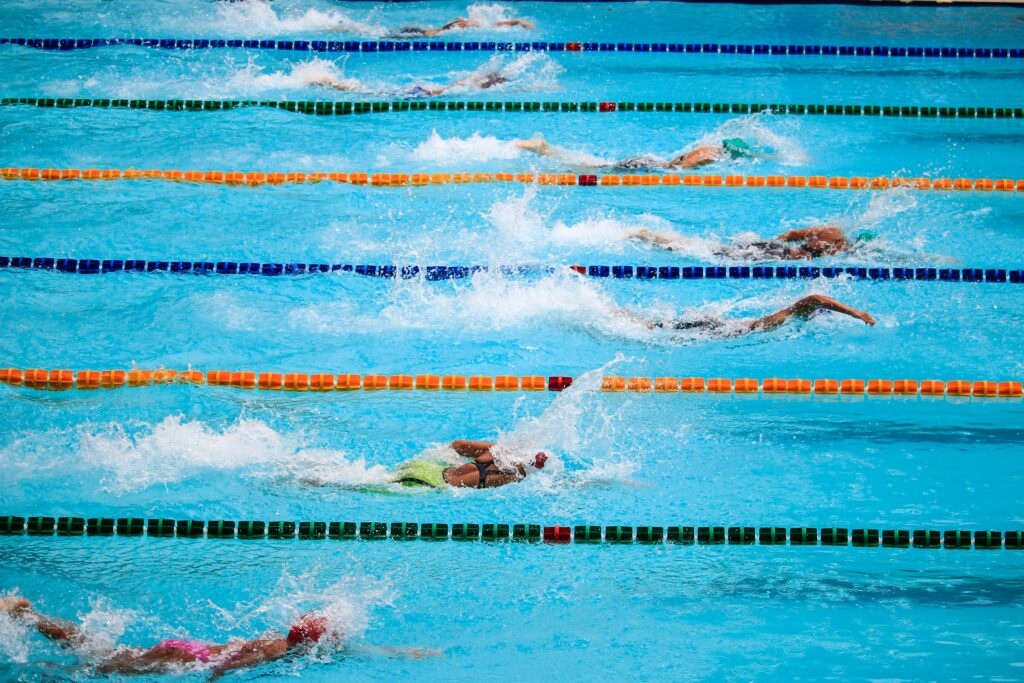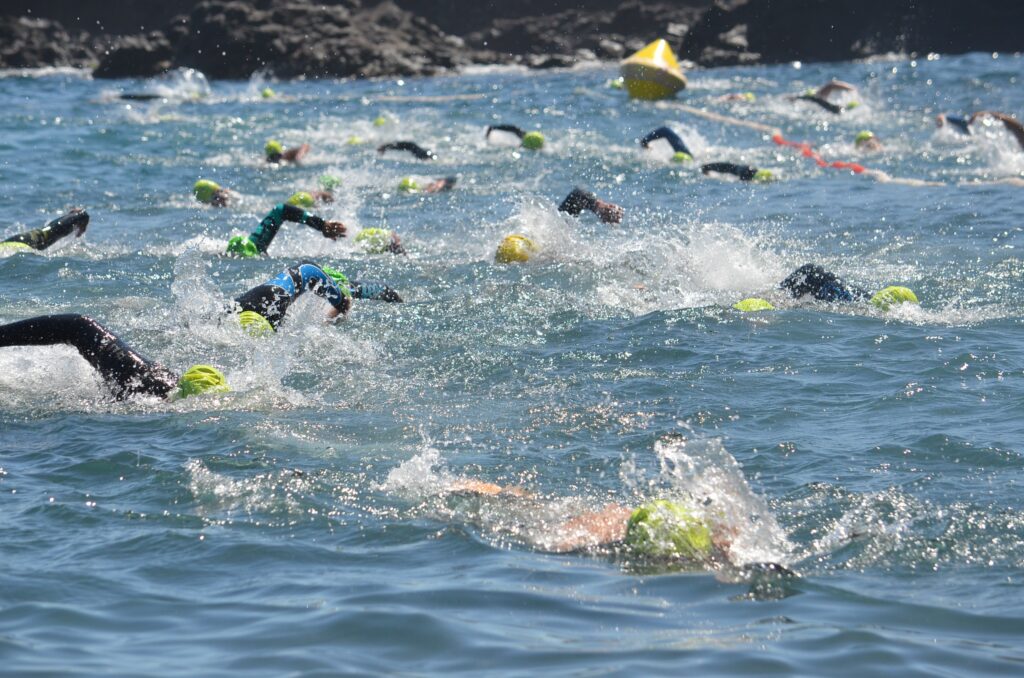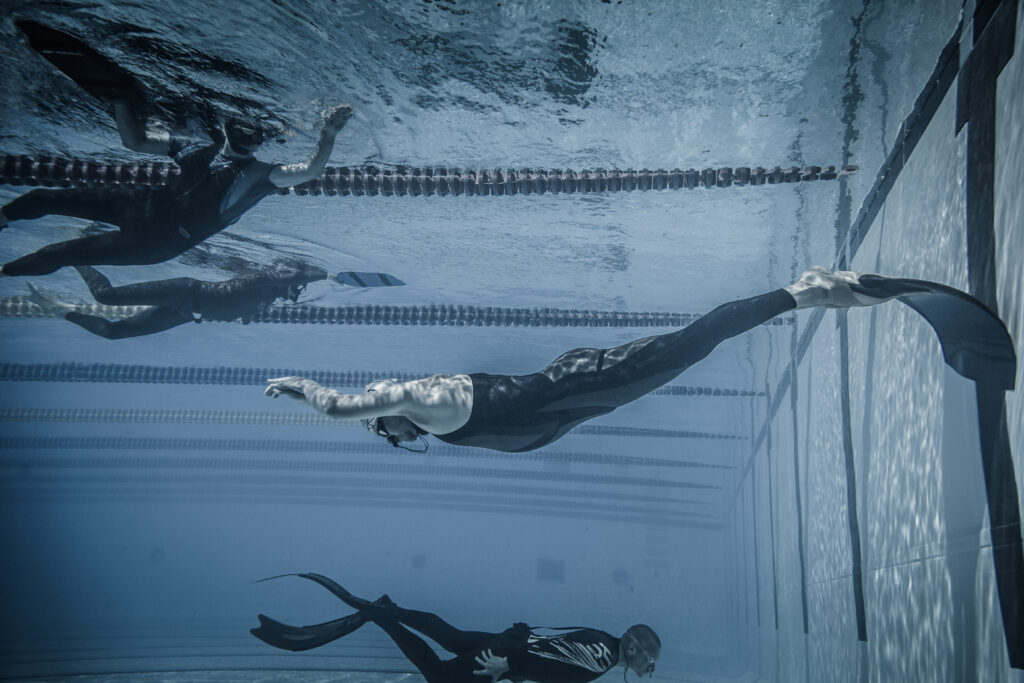Swimming the butterfly stroke is considered one of the most challenging swimming techniques, requiring a combination of strength, coordination, and endurance. While regular swimming training is essential to improve your butterfly stroke, incorporating land training exercises into your routine can help you develop the necessary strength and power to perform the stroke effectively.
Land training exercises for butterfly stroke are designed to improve your range of motion, strength, and flexibility. These exercises focus on developing your core, upper body, and lower body strength, as well as increasing your flexibility and range of motion. By incorporating land training exercises into your routine, you can improve your butterfly technique, swim faster, and prevent injuries.
In this article, we will explore the importance of land training exercises for butterfly stroke, the types of exercises that can help you improve your technique, and the importance of consistency and monitoring progress. We will also answer some frequently asked questions about land training exercises for butterfly stroke.
Key Takeaways
- Incorporating land training exercises into your routine can help you develop the necessary strength and power to perform the butterfly stroke effectively.
- Land training exercises focus on developing core, upper body, and lower body strength, as well as increasing flexibility and range of motion.
- Consistency, monitoring progress, and adjusting training are essential to achieve the desired results.
Understanding Butterfly Stroke
Butterfly stroke is a challenging swimming technique that requires a combination of strength, coordination, and flexibility. It is one of the most physically demanding swimming strokes and requires a lot of power and endurance to execute correctly. In butterfly stroke, the swimmer’s arms move simultaneously in an overhead circular motion, while the legs perform a dolphin kick.
The stroke is initiated by a powerful arm pull, followed by a simultaneous arm recovery above the water. As the arms are recovering, the swimmer performs a dolphin kick, which propels the body forward. The kick is executed by bending the knees and bringing the feet towards the hips, followed by a rapid extension of the legs, which creates a wave-like motion in the water.
Butterfly stroke requires a lot of practice and patience to master. Swimmers need to develop a strong core, back, and shoulder muscles to execute the stroke efficiently. They also need to maintain good body position and balance in the water to reduce drag and improve their speed.
To improve their butterfly stroke, swimmers can incorporate dryland exercises into their training routine. These exercises can help improve their strength, flexibility, and endurance, which are essential for executing the stroke efficiently. Some of the best dryland exercises for butterfly swimmers include pull-ups, straight leg raises, planks, squats, medicine ball slams, box jumps, push-ups, dips, hip bridges, and tricep pull-downs with resistance bands.
By incorporating these exercises into their training routine, swimmers can improve their range of motion, build strength, and develop better body control, which can help them swim faster and more efficiently.
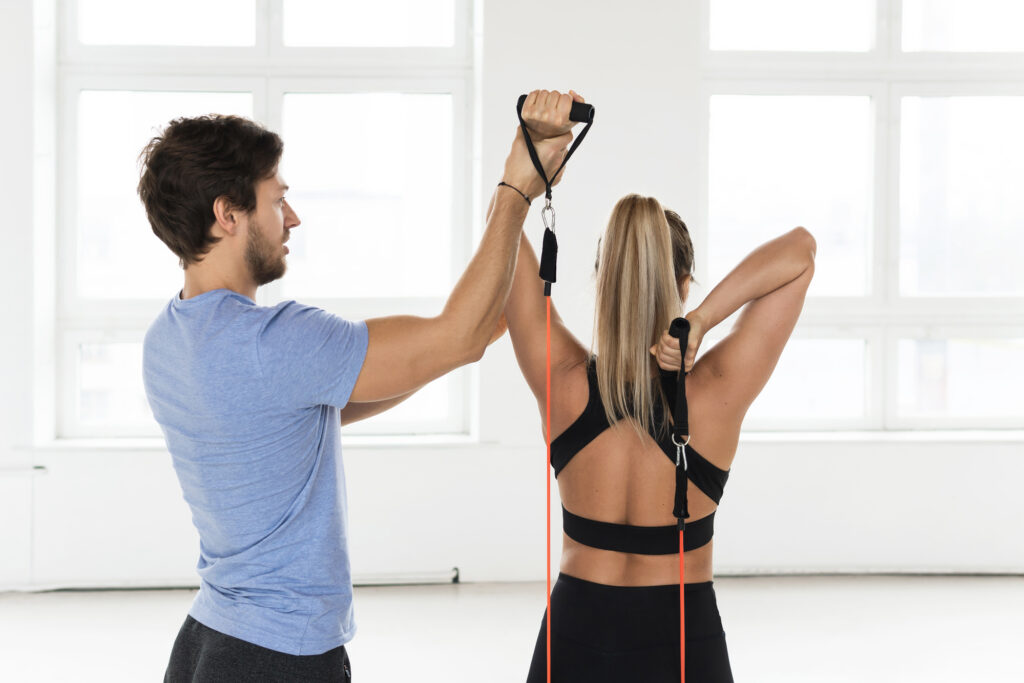
Importance of Land Training
Land training is an essential part of a swimmer’s routine, and it has significant benefits that can improve their performance in the water. Here are some reasons why land training is essential for improving your butterfly stroke:
1. Strengthens Muscles
Land training exercises can help swimmers build strength in their muscles, which is crucial for executing a powerful butterfly stroke. Swimmers can use their body weight or resistance bands to perform exercises that target specific muscles used in the butterfly stroke, such as the latissimus dorsi, triceps, and chest muscles. Strengthening these muscles can help swimmers generate more power and speed in their stroke, resulting in faster times and better technique.
2. Improves Flexibility
Flexibility is crucial for performing the butterfly stroke correctly. Land training exercises can help swimmers improve their range of motion and increase their flexibility, which can help them move more efficiently in the water. Exercises like yoga or Pilates can help swimmers improve their flexibility, balance, and core strength, which can translate into better performance in the pool.
3. Corrects Muscle Imbalances
Swimmers who perform the butterfly stroke regularly can develop muscle imbalances, which can lead to injury and poor technique. Land training exercises can help correct these imbalances by targeting specific muscles that may be weaker or less developed than others. By correcting these imbalances, swimmers can reduce their risk of injury and improve their overall performance in the water.
4. Enhances Endurance
Land training exercises can help swimmers improve their endurance, which is essential for performing the butterfly stroke over longer distances. Exercises like running, cycling, or interval training can help swimmers build their cardiovascular fitness, which can translate into better endurance in the pool. By improving their endurance, swimmers can swim faster and longer without getting tired, which can lead to better race times and improved performance overall.
In conclusion, land training is an essential part of a swimmer’s routine, and it can have significant benefits for improving their butterfly stroke. By incorporating land training exercises into their training regimen, swimmers can build strength, improve flexibility, correct muscle imbalances, and enhance their endurance, resulting in better performance in the water.
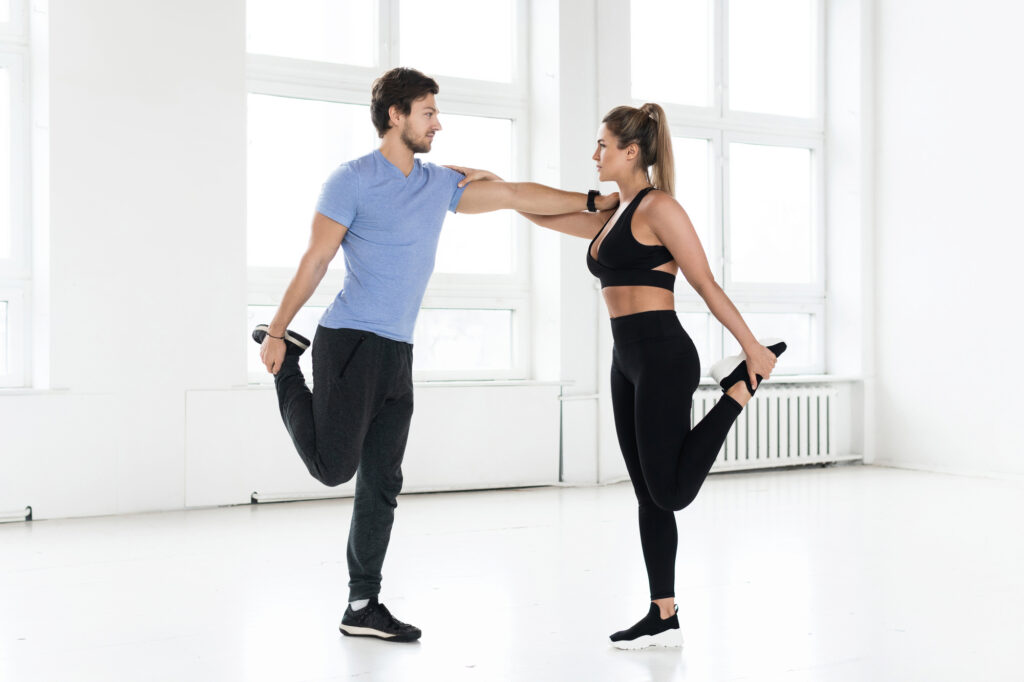
Types of Land Training Exercises
Land training exercises are an essential component of any swimmer’s training regimen, especially for those looking to improve their butterfly stroke. These exercises focus on developing the strength, flexibility, and mobility required for efficient butterfly swimming. Here are some types of land training exercises that can be incorporated into a swimmer’s training programme:
Bodyweight Exercises
Bodyweight exercises are a great way to build strength and endurance without the need for equipment. These exercises include push-ups, squats, lunges, and planks. They can be modified to target specific muscle groups, making them an effective way to improve butterfly stroke technique.
Resistance Band Exercises
Resistance band exercises are a popular choice for swimmers looking to build strength and improve their butterfly stroke. These exercises involve using a resistance band to provide resistance during the exercise, which helps to build strength and improve muscle tone. Examples of resistance band exercises for butterfly swimmers include tricep pull-downs and chest presses.
Medicine Ball Exercises
Medicine ball exercises are an effective way to improve core strength and stability, which is essential for efficient butterfly swimming. These exercises involve using a medicine ball to perform exercises such as medicine ball slams and Russian twists.
Plyometric Exercises
Plyometric exercises are high-intensity exercises that involve explosive movements, such as jumping and bounding. These exercises are great for improving power, speed, and agility, which are all important for efficient butterfly swimming. Examples of plyometric exercises for butterfly swimmers include box jumps and jump squats.
Yoga and Stretching Exercises
Yoga and stretching exercises are essential for maintaining flexibility and mobility, which are important for efficient butterfly swimming. These exercises help to improve range of motion, reduce the risk of injury, and promote relaxation. Examples of yoga and stretching exercises for butterfly swimmers include downward-facing dog and seated forward fold.
Incorporating these types of land training exercises into a swimmer’s training programme can help to improve their butterfly stroke technique and overall swimming performance. It is important to work with a qualified coach or trainer to ensure that the exercises are performed correctly and safely.
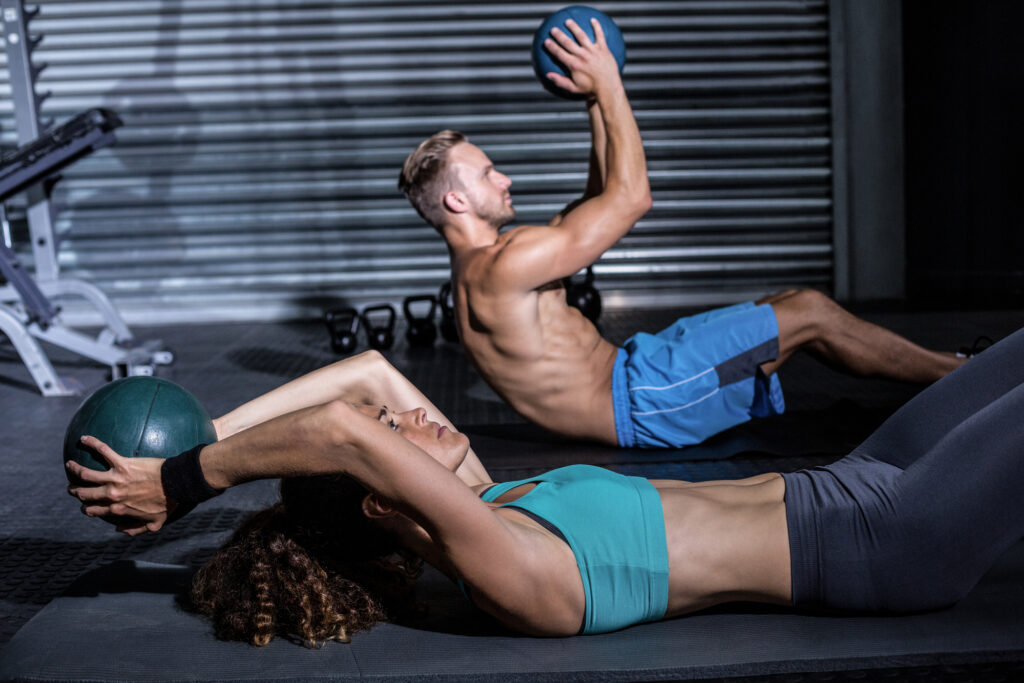
Core Strength Exercises
To swim an efficient butterfly stroke, a swimmer needs to have a strong core. Core strength exercises are essential for improving a swimmer’s butterfly stroke. Here are some of the best core strength exercises for butterfly swimmers.
Planks
Planks are one of the best core strength exercises for butterfly swimmers. They work the entire core, including the abs, back, and hips. To do a plank, get into a push-up position with your forearms on the ground. Keep your body in a straight line from your head to your heels. Hold the position for as long as you can, aiming for at least 30 seconds.
Crunches
Crunches are another great exercise for strengthening the abs. To do a crunch, lie on your back with your knees bent and your feet flat on the ground. Place your hands behind your head, and lift your shoulders off the ground, squeezing your abs as you do so. Lower back down to the ground and repeat for several reps.
Leg Raises
Leg raises are an effective exercise for strengthening the lower abs. To do a leg raise, lie on your back with your legs straight and your arms at your sides. Lift your legs up towards the ceiling, keeping them straight. Lower them back down to the ground and repeat for several reps.
It is important to note that these exercises are only a small part of a comprehensive dryland training programme. Swimmers should consult with a coach or trainer to develop a personalised programme that addresses their individual needs and goals.
Upper Body Strength Exercises
Improving upper body strength is crucial for butterfly swimmers, as it helps to generate the power and rhythm needed for the stroke. Here are some effective upper body strength exercises:
Push-Ups
Push-ups are a classic exercise that work the chest, shoulders, and triceps. They can be done anywhere and without any equipment.
To perform a push-up, start in a plank position with hands shoulder-width apart. Lower your body until your chest nearly touches the ground, then push back up to the starting position.
Variations of push-ups can be done to target different muscle groups. For example, diamond push-ups with hands close together target the triceps, while wide-grip push-ups work the chest muscles more.
Pull-Ups
Pull-ups are a challenging exercise that target the back, shoulders, and biceps. They require a pull-up bar or other sturdy overhead structure.
To perform a pull-up, grip the bar with hands shoulder-width apart, palms facing away from you. Pull your body up until your chin is above the bar, then lower back down to the starting position.
Variations of pull-ups can be done to target different muscle groups. For example, chin-ups with palms facing towards you work the biceps more, while wide-grip pull-ups target the back muscles more.
Dumbbell Press
Dumbbell press is a weightlifting exercise that works the chest muscles. It can be done with a pair of dumbbells or other weighted objects.
To perform a dumbbell press, lie on a bench with a dumbbell in each hand. Start with your arms extended above your chest, then lower the dumbbells until your elbows are at a 90-degree angle. Push the dumbbells back up to the starting position.
Variations of dumbbell press can be done to target different muscle groups. For example, incline dumbbell press targets the upper chest muscles more, while decline dumbbell press works the lower chest muscles more.
Incorporating these upper body strength exercises into a regular workout routine can help butterfly swimmers improve their stroke and overall performance in the pool.
Lower Body Strength Exercises
Improving lower body strength is essential for a powerful butterfly stroke. Here are some exercises that can help:
Squats
Squats are a great way to strengthen the quadriceps, hamstrings, and glutes. They can be done with or without weights. To perform a squat:
- Stand with your feet shoulder-width apart.
- Keep your back straight and your chest up.
- Lower your body by bending at the knees and hips.
- Keep your knees in line with your toes.
- Return to the starting position by pushing through your heels.
Lunges
Lunges are another great exercise for strengthening the lower body. They work the quadriceps, hamstrings, and glutes. To perform a lunge:
- Stand with your feet shoulder-width apart.
- Take a big step forward with one foot.
- Lower your body until your front knee is at a 90-degree angle.
- Keep your back straight and your chest up.
- Push through your front heel to return to the starting position.
- Repeat with the other leg.
Step-Ups
Step-ups are a great exercise for strengthening the quadriceps, hamstrings, and glutes. They can be done with or without weights. To perform a step-up:
- Stand in front of a step or bench.
- Step up onto the step with one foot.
- Push through your heel to lift your body onto the step.
- Step down with the same foot.
- Repeat with the other foot.
It is important to maintain good form while performing these exercises to avoid injury. Start with a few repetitions and gradually increase the number as your strength improves. Incorporating these exercises into your dryland routine can help improve your butterfly stroke.
Flexibility and Stretching
Flexibility and stretching are essential components of land training for butterfly stroke swimmers. They help to increase range of motion, improve muscle elasticity, and reduce the risk of injury. Two popular forms of flexibility training are yoga and Pilates.
Yoga
Yoga is a great way to improve flexibility and balance. It incorporates a series of poses and breathing techniques that help to stretch and strengthen the muscles. Some of the best yoga poses for butterfly stroke swimmers include:
- Downward Dog
- Cobra Pose
- Pigeon Pose
- Triangle Pose
- Seated Forward Bend
These poses help to stretch the shoulders, chest, back, and hips, which are all important areas for butterfly stroke swimmers. Practising yoga regularly can also help to improve breathing techniques, which can be beneficial for endurance swimming.
Pilates
Pilates is another form of flexibility training that is popular among swimmers. It focuses on strengthening the core muscles, which are important for maintaining proper body alignment in the water. Some of the best Pilates exercises for butterfly stroke swimmers include:
- The Hundred
- Leg Circles
- Spine Stretch
- Swan Dive
- Teaser
These exercises help to strengthen the abs, back, and hips, which are all important areas for butterfly stroke swimmers. Practising Pilates regularly can also help to improve posture and reduce the risk of injury.
In conclusion, flexibility and stretching are important components of land training for butterfly stroke swimmers. Yoga and Pilates are both great forms of flexibility training that can help to improve range of motion, muscle elasticity, and reduce the risk of injury. Incorporating these exercises into a regular land training routine can help swimmers to improve their butterfly stroke technique and overall performance in the water.
Importance of Consistency and Routine
Consistency and routine are crucial when it comes to land training exercises to improve butterfly stroke in swimming. It is important to have a consistent training schedule and stick to it to achieve the desired results.
Swimmers should aim to train at least three times a week, with a focus on exercises that target the muscles used in butterfly swimming. These exercises should be performed with proper form and technique to avoid injury and ensure maximum benefit.
In addition to consistency, having a routine is also important. Swimmers should aim to perform the same exercises in the same order each training session. This helps to establish muscle memory and ensure that the correct muscles are being targeted. It also helps to avoid boredom and keep the training sessions interesting and challenging.
To ensure that the routine is effective, swimmers should also aim to gradually increase the intensity and duration of their exercises over time. This can be achieved by adding weights, increasing the number of repetitions, or reducing the rest time between sets.
It is also important to incorporate warm-up and cool-down exercises into the routine. These exercises help to prepare the body for the workout and reduce the risk of injury. They also help to promote recovery and reduce muscle soreness after the workout.
Overall, consistency and routine are key when it comes to land training exercises to improve butterfly stroke in swimming. By following a consistent training schedule and performing a routine of targeted exercises with proper form and technique, swimmers can achieve the desired results and improve their butterfly swimming technique.
Monitoring Progress and Adjusting Training
Monitoring progress is crucial to ensure that the training plan is effective in improving the butterfly stroke. Swimmers can use various methods to track their progress, such as measuring the time it takes to complete a certain distance or counting the number of strokes taken during a lap.
One effective way to monitor progress is to record the training sessions in a logbook or training diary. This can help swimmers keep track of the exercises they have done, the duration of the training session, and any notes on how they felt during the session. By reviewing the logbook regularly, swimmers can identify areas where they have made progress and areas where they need to improve.
It is important to adjust the training plan regularly to ensure that the swimmer continues to make progress. This can involve increasing the intensity or duration of the exercises, adding new exercises, or changing the frequency of the training sessions.
Swimmers should also be aware of any signs of overtraining, such as fatigue, decreased performance, or increased risk of injury. If any of these signs are present, the training plan should be adjusted accordingly to prevent injury and ensure that the swimmer can continue to improve their butterfly stroke.
In summary, monitoring progress and adjusting training is essential for improving the butterfly stroke. Swimmers can use various methods to track their progress and adjust their training plan to ensure that they continue to make progress and avoid injury. By doing so, swimmers can achieve their goals and become more confident and proficient in their butterfly stroke.
Frequently Asked Questions
What are some effective land-based exercises to improve butterfly swimming technique?
There are several effective land-based exercises that can help improve butterfly swimming technique. These include pull-ups, straight leg raises, planks, squats, medicine ball slams, box jumps, push-ups, dips, hip bridges, and tricep pull downs with resistance bands. These exercises can help strengthen the muscles used in butterfly swimming and improve range of motion.
How can dryland exercises improve my dolphin kick for butterfly stroke?
Dryland exercises can improve your dolphin kick for butterfly stroke by strengthening the muscles used in the kick. Some effective exercises include flutter kicks, dolphin kicks with a kickboard, and resistance band dolphin kicks. These exercises can help improve flexibility, strength, and endurance in the muscles used in the dolphin kick.
What are some recommended core exercises for improving butterfly swimming?
Some recommended core exercises for improving butterfly swimming include planks, side planks, Russian twists, bicycle crunches, and leg raises. These exercises can help improve stability and strength in the core muscles used in butterfly swimming.
What are some beginner-friendly butterfly swim workouts for land training?
Some beginner-friendly butterfly swim workouts for land training include 25-yard butterfly sprints with 30-60 second rest intervals, 50-yard butterfly swims with 1-2 minute rest intervals, and 100-yard butterfly swims with 2-3 minute rest intervals. It is important for beginners to start with shorter distances and gradually increase the intensity and duration of their workouts.
What are some popular dryland exercises to improve breaststroke technique?
Some popular dryland exercises to improve breaststroke technique include resistance band breaststroke pulls, medicine ball throws, and push-ups with a clap. These exercises can help strengthen the muscles used in breaststroke swimming and improve range of motion.
What are some challenging 200 butterfly training sets for advanced swimmers?
Some challenging 200 butterfly training sets for advanced swimmers include 8×50 butterfly sprints with 15-30 second rest intervals, 4×100 butterfly swims with 1-2 minute rest intervals, and 2×200 butterfly swims with 3-5 minute rest intervals. These sets can help improve endurance and speed in butterfly swimming for advanced swimmers.

